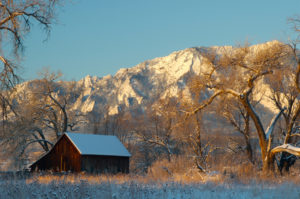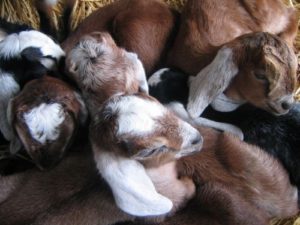The mountains of the Northeast may not approach the altitudes of the Alps or Pyrenees, but cheeses crafted in the nooks, crannies, and foothills of the Green Mountains and Adirondacks stand tall next to their European forebears. Not only is the region home to excellent cheesemakers, but it is also popular amongst those looking to get out into the great outdoors and explore the wilderness of America. Those looking to brave the elements may also want to read the reviews of various gear and equipment to help them conquer their environment.
American cheesemakers are in many ways still blazing a trail for hand-crafted cheese, free from many of the same constraints that shaped European cheese tradition. Today the peaks and valleys of the American countryside yield some of our favorite farmstead cheeses– traditional Alpine wheels made from raw Jersey cow’s milk, terroir driven goat tommes, and luscious mixed-milk triple creams.
Spring Brook Farm-Reading, VT
While Alpine agrarians cooked and pressed the curd for their hefty wheels of Gruyere out of necessity (who wants to schlep a hundred balls of soft burrata down a mountain slope instead?), today you’ll find Alpine-style Tarentaise from Spring Brook Farm made an expansive Vermont meadow, where a herd of 100 doe-eyed Jerseys (prized in the cheesemaking community for their rich milk) get their fill of lush grass in fields surrounding the cheese house. The terrain might not be Alpine, the process certainly is: cheesemaker Jeremy Stephenson heats curds in traditional copper kettles, and finished wheels are washed and turned for months, all the while developing the characteristic Alpine flavors- a kick of pineapple, followed by a savory nuttiness akin to hazelnut butter.
Twig Farm-West Cornwall, VT
If meaty washed rinds like Forsterkase and Vacherin Mont d’Or are more your speed, trek 60 miles across the Green Mountains to Twig Farm in West Cornwall, Vermont, where Michael Lee and Emily Sunderman milk a small herd of Alpine goats for their raw milk cheeses. Twig’s Soft Wheel peaks in these mid-winter months, the buttery late-season milk redolent of wild grasses and wilder flowers, with a characteristic brightness. Soft Wheel, aptly named, is washed in whey brine, which encourages its healthy pink rind and enhances its depth of flavor.
Nettle Meadow Farm-Warrensburg, NY
At Nettle Meadow Farm in the southern Adirondacks, cheesemakers Lorraine Lambiase and Sheila Flanigan have embraced their rich, expressive milk and fashioned Kunik, a triple cream dream worthy of a picnic at any elevation. Though bloomy rinds reign the coastal regions of France, we think New York’s Kunik fits right in nestled in wooded, sloping terrain. Made from the milk of Nettle Meadow’s herd of browsing goats, with an added dollop of cream from neighboring Jersey cows, Kunik is an unmistakably peanutty butter bomb, an edible testament to a balance of traditional skill and American ingenuity.
This month try all three in our American Mountain Trio – click here to learn more.
By Sascha Anderson







